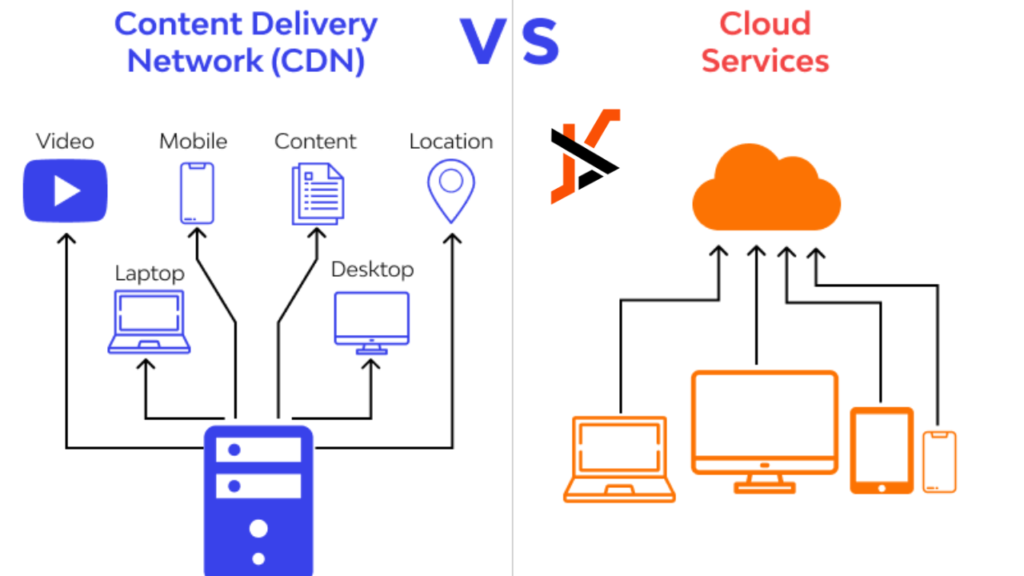The performance of a website is paramount to its success. Users expect fast-loading pages, seamless interactions, and immediate access to content. Slow websites can frustrate users, leading to high bounce rates and lost revenue. As digital landscapes evolve, businesses are increasingly turning to advanced solutions to enhance web performance. One such critical solution is the Content Delivery Network (CDN), a powerful technology that optimizes the delivery of web content through a network of distributed servers.
Understanding Content Delivery Networks
At its core, a CDN is a system of distributed servers that deliver web content to users based on their geographic location. By caching content closer to the end-users, CDNs significantly reduce latency, leading to faster load times. This is especially crucial in an age where mobile devices dominate internet traffic, and consumers are less willing to wait for content to load. A CDN can host a wide range of content, including images, videos, stylesheets, and JavaScript files, all of which contribute to the overall user experience.
Reducing Latency and Enhancing Load Times
One of the primary benefits of using a CDN is its ability to minimize latency. Latency refers to the time it takes for data to travel from the server to the user’s device. With traditional web hosting, the server’s physical location can significantly impact loading times. If a user is located far from the server, the data must travel a greater distance, resulting in slower response times. By strategically placing servers in various geographic locations, CDNs can ensure that users receive content from the nearest server, significantly reducing load times.
Improving Reliability and Availability
Another strategic advantage of CDNs is their ability to enhance website reliability and availability. High traffic volumes or unexpected surges can overwhelm a primary server, leading to downtime and lost opportunities. CDNs distribute traffic across multiple servers, which helps maintain performance even during peak periods. If one server fails or experiences issues, the CDN can reroute requests to other operational servers, ensuring that users can still access content without interruption.
Optimizing Content Delivery for Mobile Users
As mobile internet usage continues to soar, optimizing content delivery for mobile users has become increasingly important. The smaller screens and varying internet speeds of mobile devices necessitate a different approach to web performance. CDNs are equipped with capabilities like adaptive bitrate streaming, which adjusts video quality based on the user’s connection speed, ensuring an uninterrupted viewing experience. Furthermore, CDNs can optimize images and other content for mobile formats, enhancing load times and improving user experience on handheld devices.
Scalability and Flexibility for Growing Businesses
In today’s fast-paced digital environment, businesses must be agile and adaptable to changing demands. A CDN offers scalability that is vital for growth. As a business expands and experiences increased traffic, a CDN can accommodate higher volumes without necessitating extensive infrastructure changes. This flexibility allows companies to allocate resources more efficiently, focusing on core business activities rather than getting bogged down with server management and traffic issues.
Enhancing Security Measures
Security is a major concern for businesses operating online, especially those handling sensitive customer data. Cyber threats, including Distributed Denial of Service (DDoS) attacks, can cripple a website and lead to significant financial losses. CDNs provide an additional layer of security by distributing traffic and acting as a barrier between users and the origin server. This can help absorb and mitigate attacks, protecting the website from being overwhelmed. Additionally, many CDNs offer features like Web Application Firewalls (WAFs) and secure sockets layer (SSL) certificates, further enhancing overall security.
Improving SEO Rankings
Website performance is not just about aesthetics; it also plays a critical role in search engine optimization (SEO). Search engines like Google prioritize fast-loading websites in their ranking algorithms. When a business utilizes a CDN, it can improve its page loading speed, which can contribute to higher search engine rankings. Furthermore, better performance leads to lower bounce rates and increased user engagement, signaling to search engines that the site is valuable and should be ranked higher.
Cost-Effectiveness of CDN Solutions
Implementing a CDN can also be a cost-effective solution for businesses. While it may seem counterintuitive to invest in additional technology, the long-term savings outweigh the initial costs. By reducing the load on a primary server, businesses can avoid the need for expensive upgrades or additional bandwidth. Furthermore, the potential for increased conversions and customer retention due to improved web performance can lead to a higher return on investment.
Conclusion
In a competitive digital landscape, businesses must prioritize web performance to stay ahead. Content Delivery Networks play an essential role in enhancing speed, reliability, security, and scalability. As organizations continue to adapt to the needs of modern consumers, leveraging CDNs will not only improve user experience but also contribute to their overall success in the digital marketplace. As such, understanding and implementing CDN technology should be a strategic priority for any organization looking to thrive in today’s online ecosystem. Companies that embrace this technology will find themselves better positioned to meet customer expectations and achieve their business objectives.

